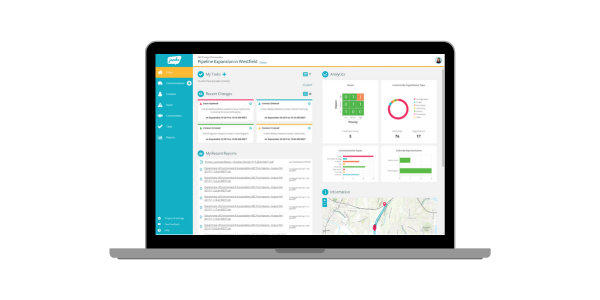
A guide to their concerns and considerations
In January and April of 2024, the province of Alberta experienced rolling brownouts due to a shortage of electrical generation. These outages left tens of thousands of Alberta homes without reliable electricity. This came on the heels of the power crisis in Texas in 2021, where more than 75% of the state suffered rolling blackouts during a series of winter storms that resulted in hundreds of deaths.
North America needs increased power generation to reduce shortages and impacts on communities. For any new project to make it from development to distribution, stakeholder engagement is crucial.
Understanding the value of stakeholder engagement
In a 2022 report on why wind energy projects fail, effective stakeholder engagement was the number one recommendation for ensuring project success.
Engaging with stakeholders should go beyond formalities—it's not about just ticking a box on a government form. It is about building meaningful relationships and trust, addressing concerns transparently, and illustrating community support.
It's important to learn early which stakeholders should be involved in a project and what their primary concerns are likely to be. Likewise, when you look at the goals of a renewable energy project, you can figure out which stakeholders can help you achieve those goals.
The shortlist of stakeholders needed for a renewable energy project
This is an excellent place to start if you're looking for a non-exhaustive list of stakeholders.
- Government officials
- Elected officials
- Agencies, boards, commissions
- Organized labour officials
- Environmental NGOs (non-governmental organizations)
- Interest groups (which could include:)
- Forestry groups
- Marine/fishing groups
- Agriculture groups
- Labour unions
- Trade unions
- Community members and residents
- Business leaders
- Utility companies
- Landowners
- Partner companies and organizations
- Indigenous communities and rightsholders
- Other NGO (non-governmental organization)
- Suppliers and contractors
- Advocacy Groups
- The media
- Anyone who's been impacted by this project - good or bad
Identifying anyone who might be opposed explicitly to the project is also important. Social media campaigns may try to spread misinformation or create negative publicity for the project.
Understanding opposing perspectives will allow you to prepare messaging that challenges misconceptions about your project and highlights its benefits to the community.
What your stakeholders may be concerned about
You must understand each stakeholder group's concerns and significant objections to your project. This activity will equip you with the information you need to effectively engage them and convince them of its merits.
It's important to note that this is just a general starting point—the specific concerns, groups, and requirements will differ depending on where you're working.
Government officials
Government officials will be concerned primarily with regulatory compliance and the economic impact of your project.
Ensure that your project meets all environmental, health, and safety standards. Identify the project's impact on local jobs and the economy, and ensure you effectively comply with all regulations.
Elected officials
Elected officials are concerned about public opinion. They'll be sensitive to how their constituents view your project and its impact on them.
Their support is about aligning with community leaders and ensuring they're seen as upholding the interests and promises that got them elected. Engaging with elected officials is a strategic move that helps rally their constituents' support.
Elected officials seek to present themselves positively, fulfill their electoral promises, and effectively possess the necessary information to address their constituents' concerns.
Getting elected officials on board will also help you identify the community leaders you need to engage with. Their support for your project can go a long way toward convincing the public that it'll benefit their community.
Lastly, these officials may be concerned with the project's environmental impact. Make sure you've any ecological studies ready to present to elected officials. Equipping elected officials with all the facts will increase their chances of lending you their support.
Agencies, boards, and commissions
Getting all the required permits is the first step to breaking ground on a new renewable energy project. Ensure you track which permits are needed, who needs to approve them, and what supporting documentation is needed for each permit.
Ensure that your documentation addresses any concerns about the project's use of water, land, and other natural resources during its construction and continued operation.
The industry's best practice for organizing this information is to use a Stakeholder Relationship Management (SRM) tool. Be careful when using spreadsheets to track this information. Any gaps in your data can impact your permit approvals.
Organized labour groups
Job security is the number one concern for any organized labour official. They want to know how many jobs will be created by your project, and they need to ensure these jobs are fair and well-compensated.
Regarding renewable energy projects, there may be concerns about the displacement of traditional jobs in the coal, oil, and gas sectors. Be prepared to address these concerns with your stakeholder communication.
Environmental NGOs (non-governmental organizations)
Environmental NGOs will be concerned with damage to the ecosystem—habitat destruction, species displacement, and other ecological impacts. They'll also have concerns about long-term sustainability practices.
Have a plan for sustainability and track how you communicate this. These environmental NGOs may be your strongest allies when gathering community buy-in, representing a powerful voice for or against a project.
Interest groups (forestry, marine/fishing, agriculture, labour, trade unions)
Like the environmental NGOs, these interest groups are concerned with how renewable energy projects might affect land, water, and resources critical to their industries.
Water used in project construction may affect farmers' downstream irrigation systems. Wind turbines may cast shadows that affect crop growth rates. Offshore wind turbines may affect fishing. Each of these concerns must be addressed publicly.
Community members and local residents
 These are the people who will ultimately decide the fate of your project. A wind project in New Brunswick failed primarily because information and studies were provided in English to a mainly Francophone community (see page 27 of the "Why do renewable energy projects fail" report).
These are the people who will ultimately decide the fate of your project. A wind project in New Brunswick failed primarily because information and studies were provided in English to a mainly Francophone community (see page 27 of the "Why do renewable energy projects fail" report).
Distrust amongst community members and residents may create a significant backlash against your project. Consider literacy and language when presenting information and findings. You need to engage the community early on in the project– discussing the project with the community right before you are ready to break ground is too late.
There will be concerns about the project's aesthetics—are you ruining the skyline with poorly placed wind turbines? There may also be concerns about noise from the wind farms. Residents may fear that their property values may decrease if they are too close to a renewable energy installation. Prepare messaging to address each of these concerns and have a way to track concerns by priority and impact.
Business leaders
Local businesses want to understand the impact of energy costs. Will the construction and operation phases strain local infrastructure? Addressing any economic hardships resulting from disruptions they may face will be important.
Utility companies
Integrating variable renewable energy sources into the existing power grid will be challenging. By their nature, renewable energy sources are less responsive to short-term demand changes.
Coal and gas power plants can ramp up their production to address a spike in demand, whereas wind and solar generation depends heavily on environmental conditions.
It's important to have a positive relationship with other utility companies to ensure consistent energy delivery regardless of the demand. Have a plan to suggest how you can work with partner utility companies and integrate your project into the energy grid.
Landowners
 Landowners will be concerned about the loss of usable land. Access roads may have to be created, creating problems for landowners.
Landowners will be concerned about the loss of usable land. Access roads may have to be created, creating problems for landowners.
Ensure that landowners are fairly compensated for using their land and record how they'll be compensated in your stakeholder engagement tracking tool. This information may be required for reporting purposes in the future.
Indigenous communities and rightsholders
It's important that your project respects the land rights, sacred sites, and cultural practices of Indigenous communities in Canada, in particular.
In the United States, this is known as Tribal consultation and in Australia, it's known as Indigenous or Aboriginal consultation. Identify the best practices needed to strengthen relationships with Indigenous communities.
The media
The media will be one outlet for your stakeholder engagement. However, they'll not just be a bullhorn touting the virtues of your project. They'll hold you to transparency and accountability. Make sure you track any media appearances and other media engagements in your stakeholder relationship management tool.
Also, keep an eye on any organizations that oppose your project. They may use media outlets and social media to distribute propaganda, misinformation, or defamatory stories about your project.
Advocacy groups
Advocacy groups may raise specific environmental, social, or economic concerns. If these concerns are adequately addressed, they can provide much-needed support for your project.
What success looks like for a renewable energy project
Addressing these stakeholders' concerns through proactive engagement, transparent communication, and inclusive planning can help mitigate objections and foster a more supportive environment for renewable energy projects.
When done correctly, your development plans may have a better chance of being approved throughout your phases.
By building strong and lasting relationships with your communities, you can establish a position as an invested partner in the community. Remember, each region has different regulations, requirements, and perspectives. It's essential to understand the environment in which you're looking to develop.
A stakeholder relationship management tool makes your life easier
You can achieve this by keeping up-to-date contact information for all your key contacts, consistently logging all communication records, staying steady in your messaging, and keeping communities involved at every stage of the project – planning, development, and continued operations.
Now that you understand who needs to be engaged in your project, write down a list of the specific people you need to consult within each category discussed. Do stakeholder mapping and analysis and populate your stakeholder relationship management tool with all of the relevant contacts.
Once you have your list written down, introduce your project to each of your stakeholders. Create an open dialogue with them and track their concerns. Write down any promises you've made and create tasks to ensure each promise is kept.
Use a tool like Jambo to track all conversations and interactions with your stakeholders. This record of engagement may be needed for regulatory compliance.
 Your renewable energy project is off to a great start because you can demonstrate to your stakeholders that you are listening to them.
Your renewable energy project is off to a great start because you can demonstrate to your stakeholders that you are listening to them.






